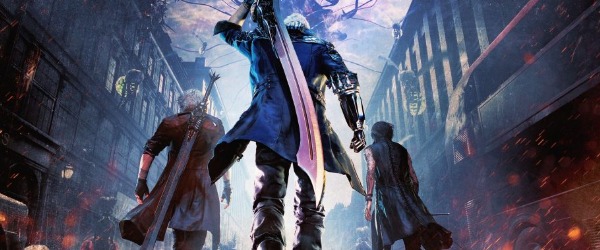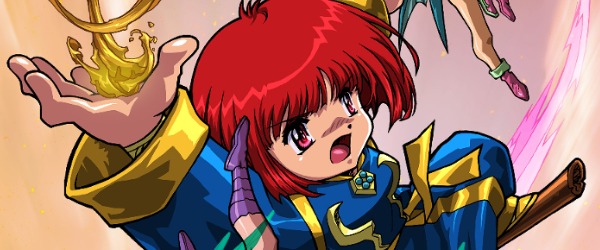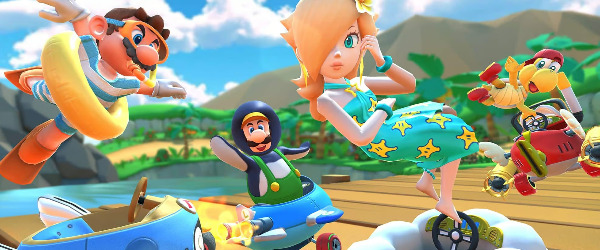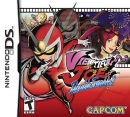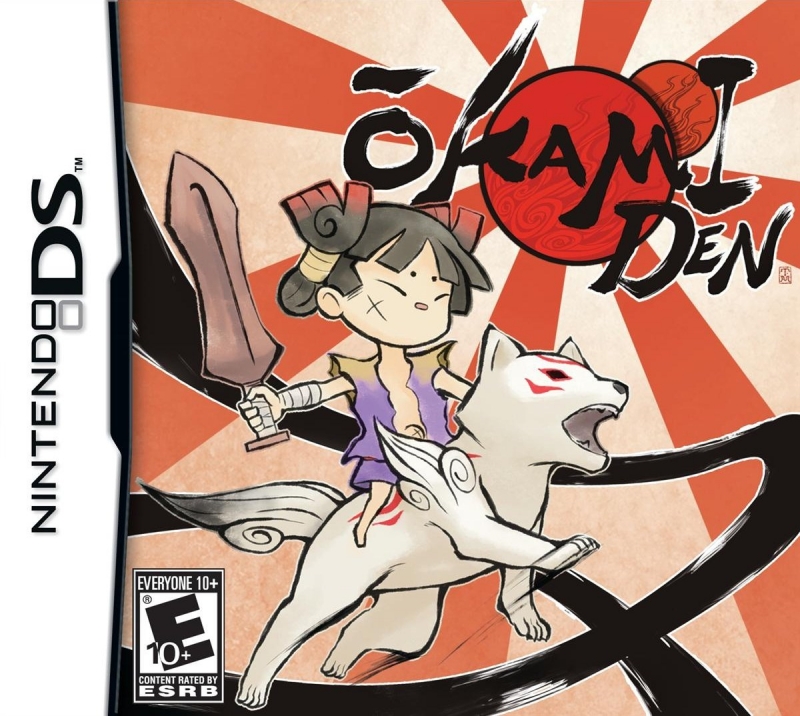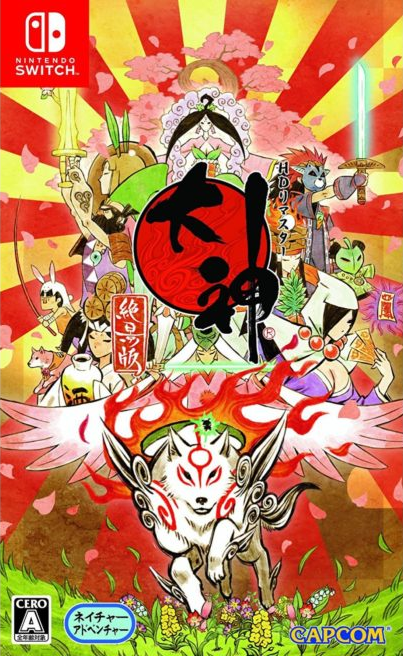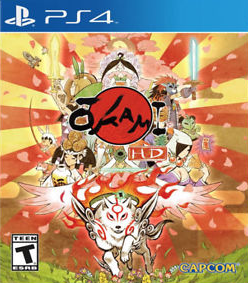
Gods & Superheroes: The Story of Clover Studio - Article
by Taneli Palola , posted on 26 March 2020 / 3,980 ViewsThe legacy of a video game developer isn't always contingent on its longevity or the number of games it develops. Some studios end up burning out fast and leaving behind only a few games to remember them by, but once in a while those few games are enough to make such a lasting impression that years after the studio's closure people still remember its name and speak fondly of the titles it created.
This kind of reverence is reserved for only a select few studios, ones that end up creating some of the most lasting and memorable games of all time, but which for one reason or another are still unable to survive in the harsh video game industry. Few development studios exemplify this better than Capcom's revered former in-house developer, Clover Studio. In total, the developer was around for less than three years, but still managed to leave behind an indelible mark on the people who played its games. This is the story of Clover Studio.
Origins

In late 2002 the sixth console generation was being dominated by Sony's PlayStation 2, with the Xbox and GameCube desperately playing catch-up to try and carve out their own market share against Sony's onslaught. Microsoft was mostly just laying foundations for the future with its console, but Nintendo's home console side had been bleeding for over five years by that point, and the desperation had begun to settle in as the company was clawing at any potential advantages it could gain.
A potential saviour appeared in the form of Capcom, when the publisher announced the so-called Capcom Five in November of 2002. These were five new games for Nintendo's ailing console: P.N.03, Viewtiful Joe, Dead Phoenix, Killer 7 and Resident Evil 4, all of which were seemingly coming exclusively to the GameCube following Capcom's US branch making an announcement to that effect. Of course, that wasn't quite how it went down in the end, and soon after a new announcement was made stating that only RE4 would be exclusive to the console.

In the end, Dead Phoenix was cancelled in 2003; Killer 7 launched simultaneously on the GameCube and PS2 in 2005; Resident Evil 4's exclusivity deal ended two months before its release, and the PS2 version came out roughly nine months after the GameCube release; P.N.03 ended up as a critical and a commercial disappointment, but at least it remained exclusive; and finally Viewtiful Joe was ported to the PS2 roughly a year after the GameCube release. So, the Capcom Five wasn't quite the boost Nintendo was hoping for, but they did lead to the birth of something else.
The one connecting element in the Capcom Five was Shinji Mikami, who oversaw the development of all five titles. In addition, the titles brought Mikami, Atsushi Inaba, and Hideki Kamiya together in shared projects, and the three would soon go on to become key figures in the formation of Clover Studio. Another key in the eventual formation of the studio was the release and success of Viewtiful Joe - the developer's first few projects would be directly linked to it.
Officially, Clover Studio was founded on July 1, 2004, with the team that had developed Viewtiful Joe forming its foundation and Atsushi Inaba acting as the new company's CEO. From its inception the developer was intended to act as a semi-independent company separate from Capcom, focused specifically on the creation of new, original intellectual properties. Another reason for the studio's formation was the rift that had been forming between Capcom and Shinji Mikami, due to the latter's displeasure with his position as a producer rather than director.
Viewtiful Joe: Style and Substance

With Clover Studio now properly in business the team quickly went to work on their first games, some of which many people tend to forget. The very first game the developer worked on was the PS2 port of Viewtiful Joe, which was mostly treated as a stop gap between the studio's founding and its first proper new game, which would turn out to be Viewtiful Joe 2.
Development on the sequel to Viewtiful Joe began shortly after the first game's release, with Atsushi Inaba as producer and Masaaki Yamada as director. Hideki Kamiya, the first game's director, was already working on his next big project at the time, but still wrote the story for the sequel to make sure that it would feel like an authentic and fitting continuation to the original's narrative.
The story picks up pretty much immediately after the first game, and the gameplay is largely unchanged, featuring some minor tweaks and alterations to make Viewtiful Joe 2 somewhat more accessible to more casual players. This was something Atsushi Inaba specifically noted as one of the main reasons behind making the sequel.
Interestingly, Inaba has also stated that he doesn't actually like making sequels, preferring to focus on new and original ideas instead. However, Viewtiful Joe 2 was a notable exception to this stance, as there were various planned features and elements the team hadn't been able to use in the first game, but that Inaba still wanted to see properly realized in a video game, and a sequel was the logical place to do so.
Some features still didn't make it into the finished product. For example, early previews for the game showed footage of both Joe and Silvia on-screen at the same time, hinting at cooperative multiplayer, but that feature had been removed by the time the game was released in late November of 2004, making it a strictly single player experience just like the first title.
There was some pressure on Clover Studio from Capcom to deliver a quality product in order to justify the existence of the new studio, and fortunately for the most part Viewtiful Joe 2 turned out to be a success. Similar to its predecessor, the game received very positive reviews upon release, with the gameplay often being brought up as a specific point of praise, but at the same time it was only a moderate commercial success.

Fortunately, that was enough; expectations for Viewtiful Joe 2 were never for it to be anything beyond a minor success. It was a fairly low-risk title for Capcom to release, all things considered, and it worked mainly as an establishing title for Clover Studio - whatever critical and commercial success the game had was more or less just a bonus.
If nothing else, the title established Clover Studio as a talented developer that could be expected to create something unique and different going forward, and as Capcom was looking at the studio as a source of potential long-term franchises its first game more than lived up to expectations. However, this also meant that the next game would have a lot more pressure on it. Before it got around to that, though, Clover created a pair of spin-off titles based on Viewtiful Joe.
Viewtiful Joe: Red Hot Rumble was released on the GameCube and PSP, and Viewtiful Joe: Double Trouble on the DS, both in 2005. They received generally mixed to slightly positive reviews and were quite quickly forgotten, to a point that most people probably don't even remember that they were made by Clover Studio. The studio's next game, on the other hand, would turn out to be its most ambitious project ever.
Ōkami: A Brushstroke of Genius

Among the key people within Clover was the aforementioned Hideki Kamiya, who had previously directed Resident Evil 2, Devil May Cry, and Viewtiful Joe, the last of which he'd specifically undertaken to increase his skills as a director. Following the release of Viewtiful Joe and the subsequent founding of Clover Studio, he quickly began work on his next big project, Ōkami.
However, the game was actually born out of a number of different ideas and concepts within Clover Studio, the key one being that of "depicting a lot of nature". The problem was, the project initially had no clear central concept or theme that could be used as a basis for the rest of the game. Kamiya eventually put together a demonstration video showing a realistic wolf running around in a forest, with flowers blooming and trees growing in its wake.
The problem was, the team still had no clear goal in mind for the gameplay, and according to Kamiya the initial prototype they created was "incredibly boring to play". He later suggested that this was due to him allowing too many disparate ideas to be brought into the game by the rest of the team, which led to the whole development process losing focus and moving away from the initial idea he had had for it.
The core gameplay did eventually start to take shape, but it still lacked a proper hook that would differentiate it from other games of its kind, most notably Nintendo's The Legend of Zelda series. The eventual idea for it was actually born out of the game's change in visual style. As already mentioned, originally Ōkami was supposed to have a more photorealistic 3D look, but as development progressed further the team realized that the style wouldn't be a good fit for the game they were planning on making.

The team eventually settled on a visual style inspired by traditional Japanese watercolour and wood carving art, as well as Sumi-e, or ink wash painting. They felt that this allowed them to better represent the main character - Amaterasu - and her connection to nature and goal of restoring it in the game. The switch to the more stylized watercolour visuals then went on to inspire the mechanic that Ōkami would become best known for – The Celestial Brush.
Atsushi Inaba stated back in 2006 that once they had settled on the graphical style, the idea to involve players in the game's visual side in some way was born. Of course, once the idea was born there was still the matter of successfully implementing the mechanic into the game without breaking the rest of the gameplay, which took a lot of work according to Inaba.

Another huge influence on the game was Japanese mythology, with the story, locations, character names, and countless minor details being at least partially taken from mythology and folklore. The most obvious example is Amaterasu herself, who was directly inspired by the Shinto sun god of the same name. Other notable examples include the 8-headed dragon Orochi, the warrior Susano, Amaterasu's companion Issun, and practically every even slightly significant character in the game.
Ōkami was released on 20 April, 2006, in Japan, and later that same year in North America. In Europe and Australia we had to wait until the following February to get our hands on the game, but I would say the wait was worth it in the end. It received critical acclaim upon release, but unfortunately sales didn't reflect this positive reception, much to the disappointment of Clover Studio and Capcom.
Sadly, Ōkami's poor commercial performance would end up signaling the beginning of the end for the studio. The company's previous games had only been moderate commercial successes, but Ōkami performed far below expectations and put the developer in serious jeopardy of closure in the very near future. Its next game would have to single-handedly save the studio from closure, but with Shinji Mikami of Resident Evil and Devil May Cry fame directing the title, the potential was certainly there.
God Hand: The Swansong

God Hand was first announced in April 2006, with Shinji Mikami at the helm, as mentioned above. In addition, the core team was largely the same as that which had made the massively successful Resident Evil 4 a few years earlier, providing the fledgling game with an instant shot of credibility, despite it being a new and untested IP. Of course, any amount of credibility is only good until the game is released, after that it has to stand on its own.
The idea for God Hand was born out of a discussion between Mikami and Atsushi Inaba about the then-current state of action games, and how the genre had largely abandoned hand-to-hand combat in favour of weapon-focused combat systems. This served as the inspiration for the central concept for the studio's next title, where they would strip down the genre back to its basics and focus heavily on unarmed combat, in some ways bringing the genre closer to its roots.

Initially it was supposed to be quite serious in tone, with very little humour or levity, but a trailer for the game was shown at E3 2006 featuring comic relief and this was very well received. Following that, the studio decided to alter the game's tone toward something more humorous, and eventually the comedy became a much larger part of the game in the final release than expected. This mix of western and Japanese-style comedy, combined with Mikami's goal of making a very challenging action game primarily aimed at the hardcore audience, resulted in a very unusual product that had a fairly difficult task ahead of it. It needed to appeal to a much wider audience than a game of its kind usually would to ensure the studio's continued existence.
Unfortunately, as had been the case with Ōkami, God Hand was a commercial failure, but to an even greater degree this time, selling just 60,000 copies in Japan by the end of 2006 and failing to find a significant audience in the west as well. To make matters worse, unlike Clover Studio's earlier games, it wasn't all that well received by critics or audiences at the time either, with some people loving it and others finding it very lacking. In retrospect the game has earned itself a status as a cult classic and today it is viewed in a much more positive light than it was during its release.
With another failure on its hands the future of Clover was increasingly in doubt, and compounding the issue was the increasingly strained relationship between Capcom and many of the key people at Clover, who weren't happy with Capcom's constant opposition to greenlighting new games that weren't part of an already existing franchise. Eventually these issues grew severe enough that Atsushi Inaba, Shinji Mikami, and Hideki Kamiya all left the company in late 2006, effectively gutting the core of Clover Studio, and soon after Capcom decided to shut the developer down and absorb it into one of its other in-house studios.
Officially, Clover Studio as a name and entity came to an end in March 2007, and most of the people who worked at the developer during its existence left Capcom. The games Clover created remain under Capcom's ownership to this day, although of course very few of them have lived on in new releases.
The Legacy of Clover

The end of Clover Studio was unquestionably a huge loss at the time it happened, as the industry was starting to head towards an increasingly homogenized and safe environment dominated by yearly iterations of the few biggest franchises around. Experimentation within the industry was increasingly the domain of indie developers, while big publishers relied more and more on tested and familiar names to drive their businesses. Clover was, at the time, one of the last bastions of more unconventional and risky projects within the AAA space, at least outside of the three big console manufacturers, meaning that losing the studio also seemingly meant losing out on a lot of potentially interesting titles.
However, with the downfall of Clover and the exodus of many of its key people from Capcom, there was suddenly an influx of exceptionally talented individuals floating around the Japanese video game industry without a place to work at. The first sign of something big happening was the founding of a new company called Seeds Inc. in late 2006 by Atsushi Inaba. The studio employed many of the same people that had previously worked at Clover, including Shinji Mikami and Hideki Kamiya, but otherwise remained quiet regarding any potential future plans and titles.

Then, in October 2007, Seeds Inc. merged with another young company founded by former Capcom employees, called Odd Inc., to form a development studio that you may just have heard of – PlatinumGames. Platinum has since become one of the most prolific and talented video game developers in the world, and unlike Clover Studio it has also found great commercial success with its video game releases, in addition to critical acclaim. In many ways Platinum has carried on the design philosophies that formed the core ideals of Clover Studio, with a strong focus on developing its own new IPs, but also doing contract work with various licenced properties at the same time to provide some stability for the studio that Clover sadly lacked.
Another company that could be seen as part of Clover's legacy is Tango Gameworks, founded by Shinji Mikami in 2010 after he left PlatinumGames. It's known primarily for the two Evil Within games. Additionally, some of the other people who worked at Clover went on to join UTV Ignition Games' Tokyo studio, where they developed El Shaddai: Ascension of the Metatron. Outside of these companies, which were born out of the ashes of Clover Studio, the developer's legacy has continued in the games and characters Clover created, whether in sequels like Okamiden, or in characters like Amaterasu and Viewtiful Joe appearing in games like Marvel vs. Capcom 3.

Thinking back, Clover Studio really wasn't around for very long, being closed less than three years after it was founded in 2004, but in that very brief time the developer managed to create some of the most enduring classics of the era; titles that are still often considered among the best games of that particular generation. Numerous different factors played a role in the studio's demise, from lack of freedom as a subsidiary of Capcom to simply existing at the wrong time in the video game industry.
Regardless of the reasons for its closure, though, the impact of Clover's games and the people who worked on them cannot be understated. Even if in some ways Clover was almost set up to fail because of how the video game industry worked and what the realities of working for a big publisher like Capcom were at the time, it still succeeded in not only creating some truly unique and exceptional titles, but also influenced the design philosophy and style of countless other games to follow. Very few other studios can make such claims, especially ones that were around for such a short period of time.
Sources:
- Capcom & Clover, Over and Over (Gamasutra)
- Platinum Games' Kamiya Reflects on Bayonetta, Okami (1UP)
- Running with the Wolves: Atsushi Inaba talks Okami (Gamespy)
- Clover Studios' Final Interview? (1UP)








